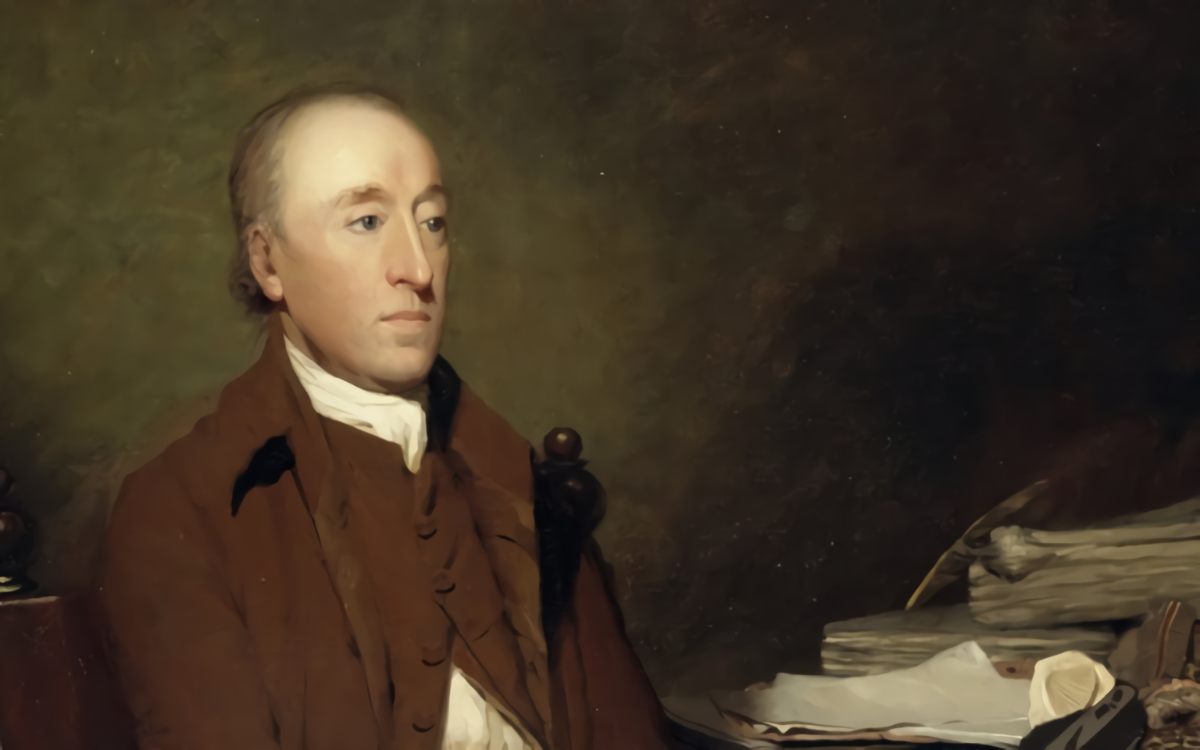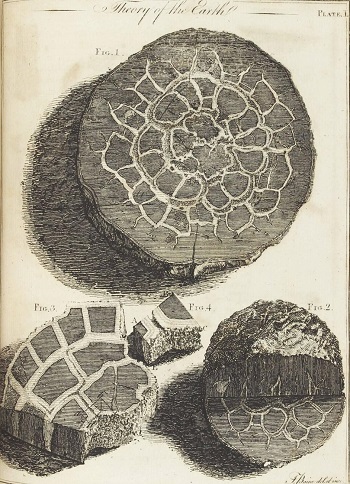Let’s talk about the famous scientist, James Hutton. Although historians no longer make this claim, geologists still widely believe that James Hutton is the main and most influential father or founder of geology. They also advocate that his Earth theory is the basis of modern science, but this contains both irony and paradox. The vast heritage that he left for the next generations is quite different from what he sees as the most important aspects of the Earth.
Who is James Hutton?

James Hutton was the son of a merchant living in Edinburgh. In his youth, he first studied at the university in Edinburgh for a career in medicine, then in Paris, the center of earth science, and in Leiden, where he received his medical degree. Considering his subsequent studies, it is noteworthy that his specialty thesis was on blood circulation, which is an ongoing natural system. When he returned to Scotland, his interest in chemistry had grown even more, and he and a friend established a factory that produces ammonium chloride for industrial use. He later bought several farms near Edinburgh and was heavily involved in the development of agricultural practices. These approaches provided him with enough income to live a comfortable single life in Edinburgh while communicating with men with similar intellectual interests.
In many ways, Hutton was a typical Enlightenment philosopher and a friend of David Hume, Adam Smith, and other famous Edinburgh intellectuals. His most ambitious published work is the comprehensive Principles of Knowledge, dated 1794, on the basics of the philosophy of knowledge. He intended to demonstrate his diverse philosophy in his 1795 book The Theory of the Earth, which earned him recognition. With the same intention, he also made publications in physics and chemistry, and after his death, he left behind the manuscripts of his great work called Principles of Agriculture.
According to Hutton’s concept of the natural world, the Earth has a smart and purposeful design, similar to that of many thinkers of the Enlightenment. It was designed by a distant and impersonal God. It was in accordance with the purpose of the only being capable of studying and appreciating it, the humans. This “divine” approach to nature was as religious as the Christian theology that was implicitly opposed and culturally dominant.
A breakthrough theory

His core belief was deistic, which is the belief that the Earth was created as a “system” in which all components interact to maintain a dynamic balance, similar to the “solar system” with planets that revolve around the Sun. In his other analogy, he thought of the Earth as a steam engine. Only such stable and secure systems could secure the Earth’s permanent viability for humans. His experience with the farms near Edinburgh led him to believe that the soil, where plants and animal life grow and on which human life is entirely dependent, is a waste of land that is constantly drifting with water. Continuous dissolution of the underlying rocks could lead to continuity, but these too would eventually drift into the sea.
Thus, in the long term, the continents were wearing off, and there would be no land left at the end. Hutton solved this apparent flaw in the “designed Earth” system with the prediction that the substance, which comes from the wearing and drifting of the land, collapses to the seafloor and turns into new rocks that would later elevate to form new continents. In theory, this would complete a wide cycle of processes and ensure that land was always present to sustain human life.
When James Hutton first announced his theory publicly in 1785, he supported it with evidence that others with similar interests already knew very well, but he interpreted it differently. The driving force of the infinite cycle of change suggested that the rocks were hardening and new continents were rising with the enormous power of underground heat. He found signs of them in the rocks almost directly in front of his door, interpreting them as the product of intense heat. He then traveled around Scotland to search for evidence of the enormous power of Earth’s internal heat that could raise new continents from the ocean floor.
The successive series of worlds

Above all, he found evidence of the recurring sequence of processes proposed by the dynamic equilibrium concept of the Earth: the “chain of worlds,” which is the last part of our world today, but not exactly the last one. He concluded that this was a system with neither a trace of its beginning nor a final sign. The theory that the world is a stable system in which natural processes operate forever with an unchangeable intensity was later known as “the theory of uniformitarianism.“
His deistic universe theory had implications that were hard for his contemporaries to accept. The least problematic was the way that he looked at long-term processes with certainty. The Earth’s geography seemed to have not changed significantly since recorded human history (i.e., since classical times). For this reason, Hutton concluded that the subsidence and elevation of the land should be happening too slowly to be noticed. Even religious people who were educated agreed that the Earth might be very old.
In the Theory of the Earth, 1795, James Hutton thinks that, as we see the series of worlds, we can conclude that there is a system in nature; just as we have come to the conclusion that by seeing the rotation of the planets, there is a system for continuing this rotation.
Principles of Hutton
But Hutton was rightly advocating for the creation system that runs through the infinite and will lose all its meaning if human life is also not infinite. Therefore, his theory did not match with the religious understanding of the created state of the universe and everything in it, the historical character of the Earth and human life. Even at a more worldly level, some of his theories were found unreasonable by chemists. Just like his theory that rocks form not by filtration from groundwater but by combining under intense heat, except for some rocks that are really formed by hot melts (now called eruptions).
James Hutton’s Theory of the Earth might have been forgotten many long years ago after his death, as other 18th century works with similar titles, if he had not been supported by his younger Edinburgh colleague, mathematician and astronomer John Playfair. However, Playfair’s 1802 Illustrations of the Huttonian Theory of Earth put less emphasis on the design and importance of human life and more emphasis on the infinite length of time criterion and, as a result, the slowness of processes like subsidence and elevation. This radically changed the character of Hutton’s theory. The points he emphasized would be named the Hutton principles, which later scientists, especially Charles Lyell and (through him) Charles Darwin, adopted and used for their new explanations.
James Hutton quotes
“There is no vestige of a beginning, no prospect of an end.”
“The past history of our globe must be explained by what can be seen to be happening now. No powers are to be employed that are not natural to the globe, no action to be admitted except those of which we know the principle.”
“Man is made for science; he reasons from effects to causes, and from causes to effects; but he does not always reason without error. In reasoning, therefore, from appearances which are particular, care must be taken how we generalize; we should be cautious not to attribute to nature, laws which may perhaps be only of our own invention.”
“[It] is the little causes, long continued, which are considered as bringing about the greatest changes of the earth.”
“The globe of this earth … [is] … not just a machine but also a organised body as it has a regenerative power.”

